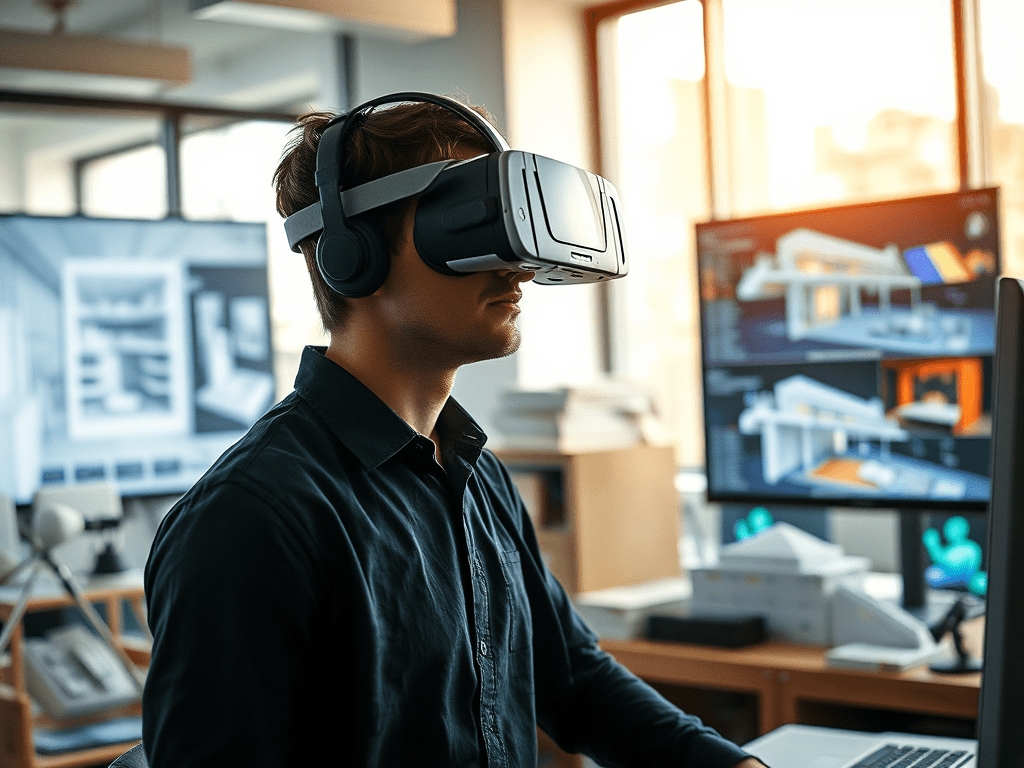The future of visualization in architecture - an overview of the latest technologies

It is difficult to start a conversation between a designer or developer and an investor without an attractive and imaginative visualization. Nothing like a well-executed visualization will answer the client’s question: well, but what will this building or this interior look like when completed? Today, modern technologies provide great opportunities for architects to communicate their vision even better and more effectively to others. What technologies can designers use today to make their offerings more attractive?
Virtual reality (VR) Virtual reality is a technology that allows for a spectacular expansion of design presentation methods. A 3D design rendered into a virtual walkthrough and presented with the help of virtual reality significantly helps the client make a final decision. Thanks to VR goggles, the recipient has the possibility of almost real and tangible movement through the spaces created by the designer. The client can move seamlessly between rooms, view details up close and move away to look at the interior from a wider perspective. Presenting a project with the help of VR is a solution that is not only attractive and impressive for the client. It’s also a technique that brings tangible business benefits and reduces the number of design revisions to a minimum.
Augmented reality (AR) Augmented reality is a technology that combines the virtual and real worlds. AR provides the ability to superimpose virtual elements on those existing in reality. The effects of a visualization made with AR technology can be viewed using special glasses, but simply the screen of a phone or tablet will also suffice. Augmented reality allows you to see how a particular piece of furniture, paint color, wallpaper or any other piece of equipment will look in a specific, real existing place.
Interactive scenes in 3D visualizations Modern 3D visualizations in the form of virtual walk-throughs created by designers are increasingly opening up to the client and giving him the opportunity to make minor changes to the design. If it happens that the client does not like the color of the sofa, for example, he will be able to change its color in real time and decide for himself which one he likes best. Allowing the customer to intervene in the design in this way significantly shortens the design approval process and reduces the need to render subsequent scenes containing minor changes suggested by the customer. Such a possibility also makes the client have a sense of co-creation of the project and a real influence on the obtained effect.
Rendering in real time The ability to render 3D models in real time has revolutionized the work of many architects. From now on, turning 3D models into interactive visualizations, which used to take up to several hours, can be done here and now, in real time, sometimes even directly through the browser – without the need to install additional software.
This form of rendering makes it possible to deliver the results of work to clients much faster, and significantly saves the designer time. Using new technologies can free up hours previously wasted on repetitive and drawn-out but necessary tasks, allowing the designer to work much more efficiently.
Artificial intelligence AI is a technology that is developing at an impressive pace, and the possibilities for its application are staggering. Artificial intelligence is also increasingly being used in architecture and interior design. Tools using AI algorithms make it possible to quickly generate new layouts and design proposals based on a set of input data, such as budget, room square footage, and target style, for example. Such a solution allows architects to efficiently create several differentiated base design proposals that they can present to the client, and only once the client decides on one of them can they get on with refining the concept.
Nowadays, there are also a growing number of solutions that allow any user – even a person without any experience with interior design – to generate a design on their own. Work with such a tool usually begins with a conversation with the bot, which, based on the information obtained, creates an arrangement in accordance with the client’s expectations. However, it is worth remembering that currently the projects generated in this way are quite simple and sometimes schematic. So it’s hard to say when AI’s work will be able to match the arrangements created by an experienced and creative designer.
Integrated communication Evolving technologies mean that online meetings offer many more possibilities than just a conversation with a shared camera or screen view. Online meetings in 3D space are also becoming more common. Meetings held in this way allow for a virtual conversation embedded in any 3D visualization created in advance. The meeting facilitator can guide participants through the specific rooms that the conversation is about. 3D meetings created in ShapeSpark are accessible from a browser, no additional software needs to be installed, and each participant can join the others by clicking on a link sent by the organizer.
The pace of development of AI technologies and solutions using virtual reality is currently the fastest in history, and it is difficult to even imagine what the market will look like in 10 years. Today, however, it is clear that following trends and using modern solutions is the key to growth, a way to optimize work and a method to deliver the best possible results to your customers.